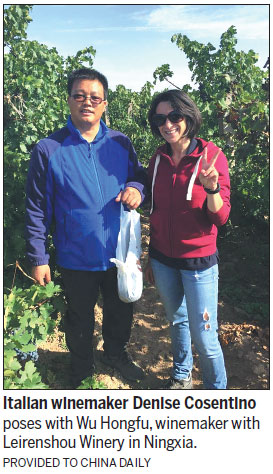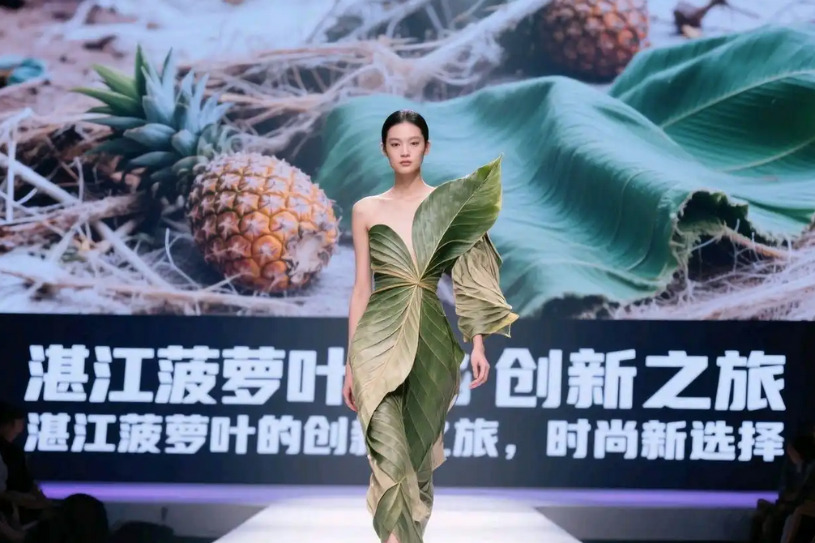Favorable terroir, tough conditions make for unique flavors

The local government in Ningxia's wine region is making progress in helping wine growers to face the challenges of the local climate and has received positive results, according to a foreign winemaker visiting the area.
According to Denise Cosentino, an Italian winemaker and China manager of Gilbert & Gaillard, the main challenge for viticulture in Ningxia is the climate, especially during winter when vineyards need to be buried to protect against freezing temperatures.
"This operation happens often in a very short time and it can kill some vines, raising the production costs and then the final price of the wines. Water scarcity is also another issue to cope with in this area of China," Cosentino said during her trip in Ningxia.
She arrived in China in 2014 to work as a wine lecturer at the Enology College in Northwest A&F University in Shaanxi province. She participated in the International Winemakers Competition in 2015, in which she used the grapes planted at the east foothills of the Helan Mountain and tried to make her own wine.
The Helan Mountain's eastern foothill is located between the Yellow River alluvial plain and the Helan Mountain's alluvial fan, covering a total area of over 200,000 hectares.
The region's annual sunshine duration reaches 2,851 to 3,106 hours, with abundant heat. The soil has good permeability and rich minerals, which all make it a star region to produce good grapes.

However, the huge diurnal temperature variation and limited rainfall (less than 200 mm per year) are big challenges for viticulture in Ningxia.
The local government is putting in significant efforts to help wine growers to face those challenges, encouraging the standardization of vineyards and guiding local wineries to install more e= cient drip irrigation systems to control water use, Cosentino said.
As for the competition in 2015, Cosentino's aim was to express and enhance the real nature of Ningxia grapes, to see what the fruit of this land can give as wine.
"Honestly, the first time I tasted the grapes of my plot, they were pretty unripe. It was too early to harvest them. I came back to sample the grapes a few times until I decided to pick them," Cosentino said.
After tasting the grapes, she decided to use simple techniques such as a cold maceration method to deal with the grapes before fermentation, so as to extract the color and fl avor from the skin, rather than a post fermentation maceration process.
"The local government is really committed to making Ningxia the best wine region of China, and it has already done so," Cosentino said.
"I am sure that with its great support, Ningxia will excel in its wine production among the best wine regions of the world, if the region can follow its own unique style and try to impose its presence in the wine world for its typicality."
Cao Kailong, director of the Administration of Development of the Grape Industry of Ningxia, said that when foreign winemakers come to Ningxia, some of them describe the vineyards in Ningxia as being like a paradise because the soil on this land is so clean.
"Their coming also gave us confidence and brought more opportunities for cooperation. Currently, there are 30 foreign countries selling Ningxia's wine. We will spare no efforts to develop our wine industry," Cao said.
(China Daily European Weekly 09/08/2017 page13)
Today's Top News
- Tianwen 2 mission in good condition, 3 million km from Earth
- US emerges as biggest loser in Trump's trade war: OECD
- US visa hurdles put international students on edge
- China's efforts on environment inspire countries
- Xi urges US to retract all negative steps
- What US-China standoff means for the world






























